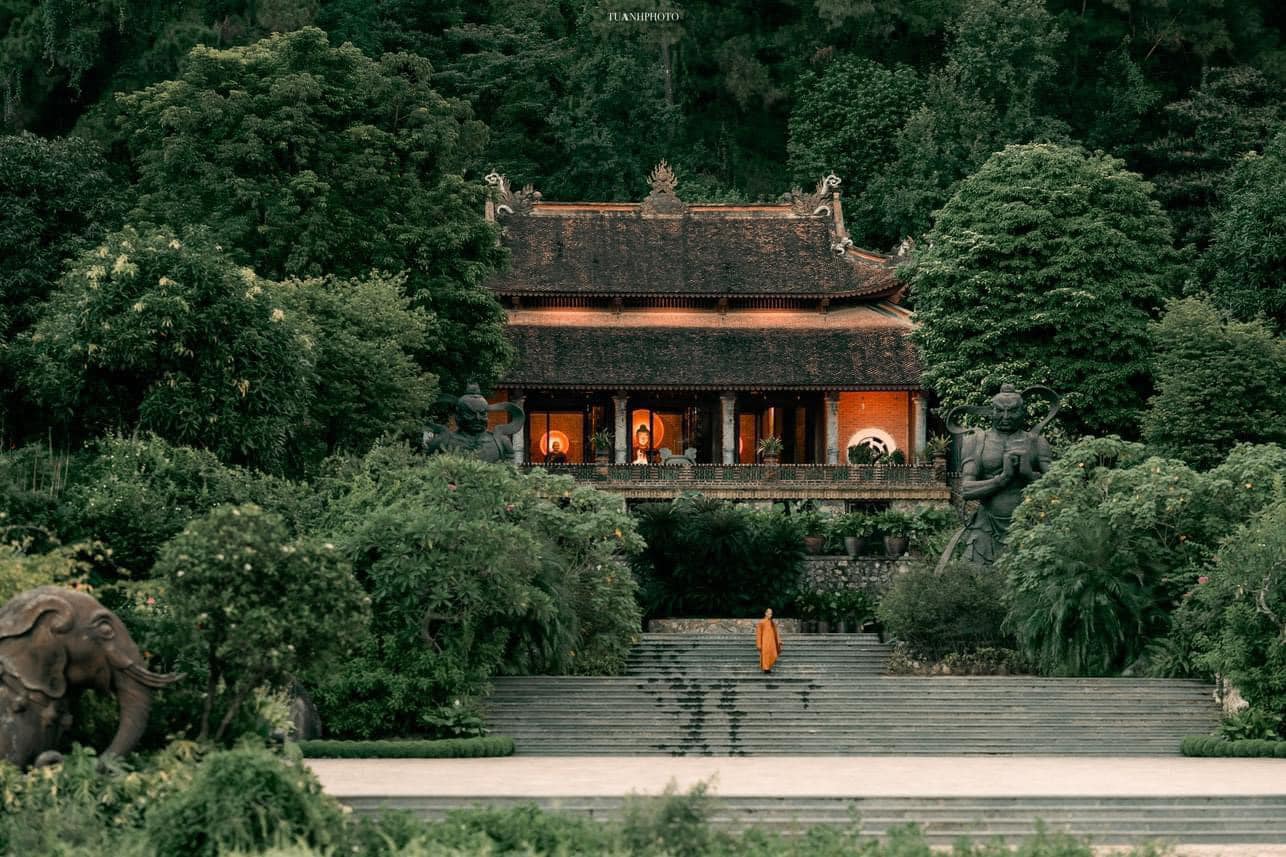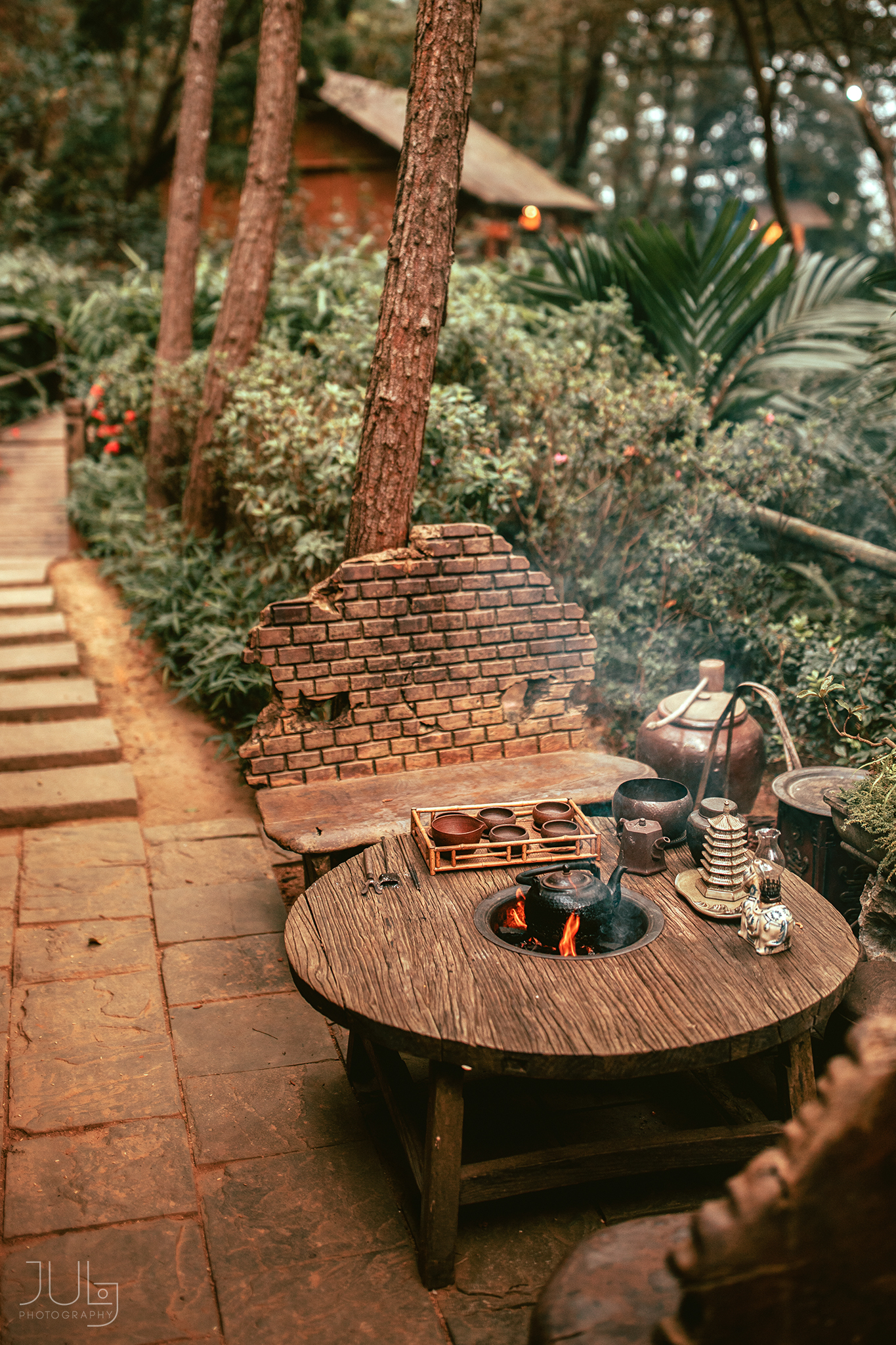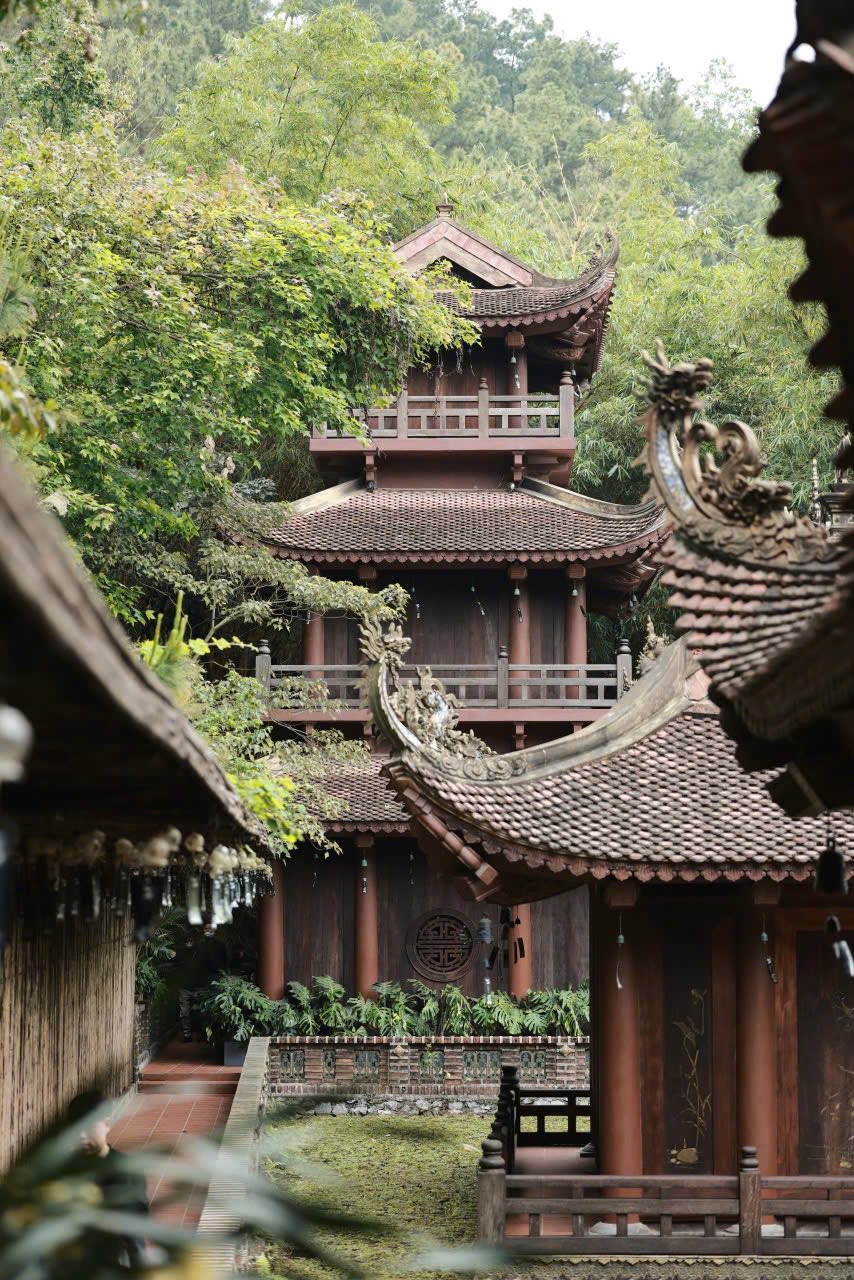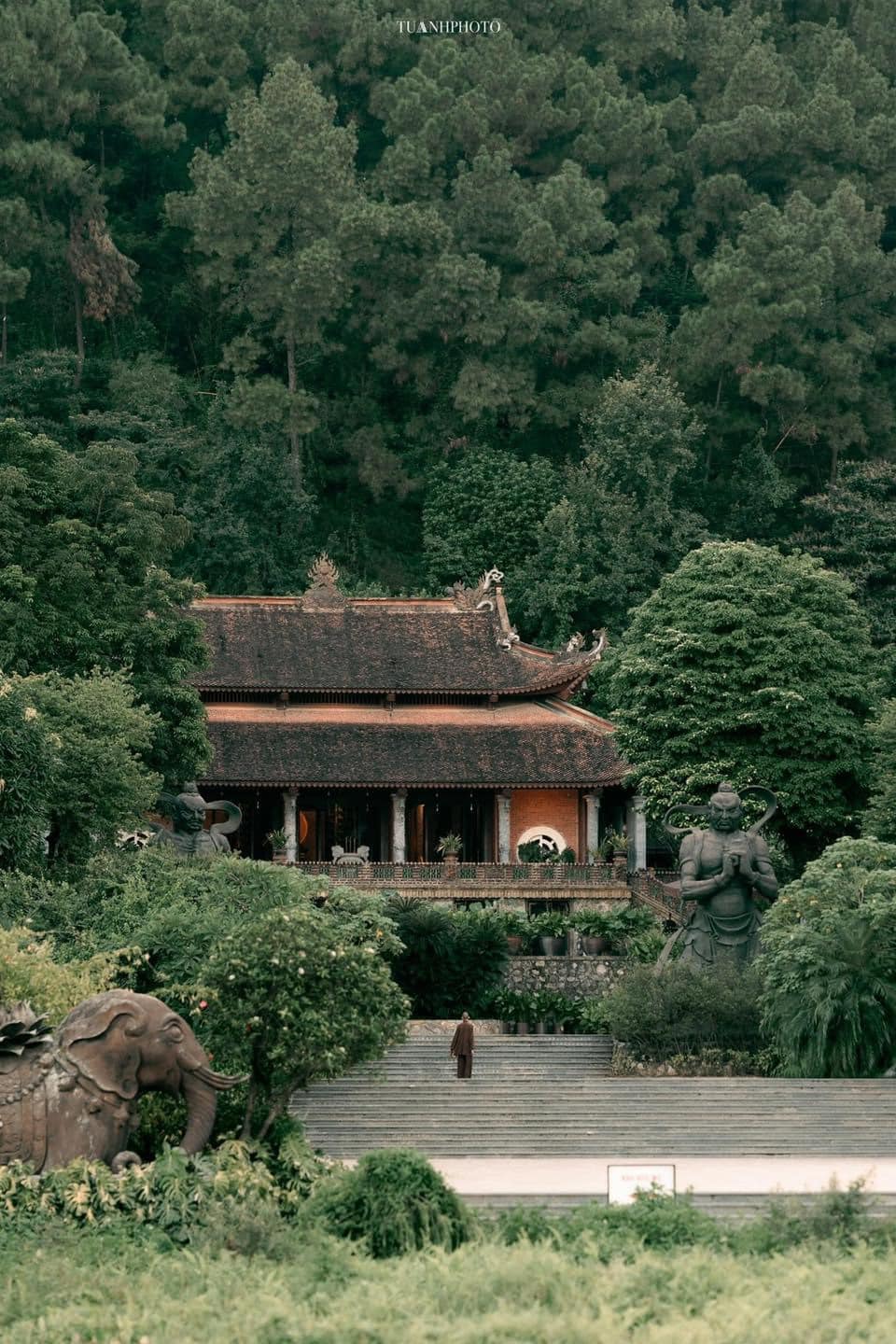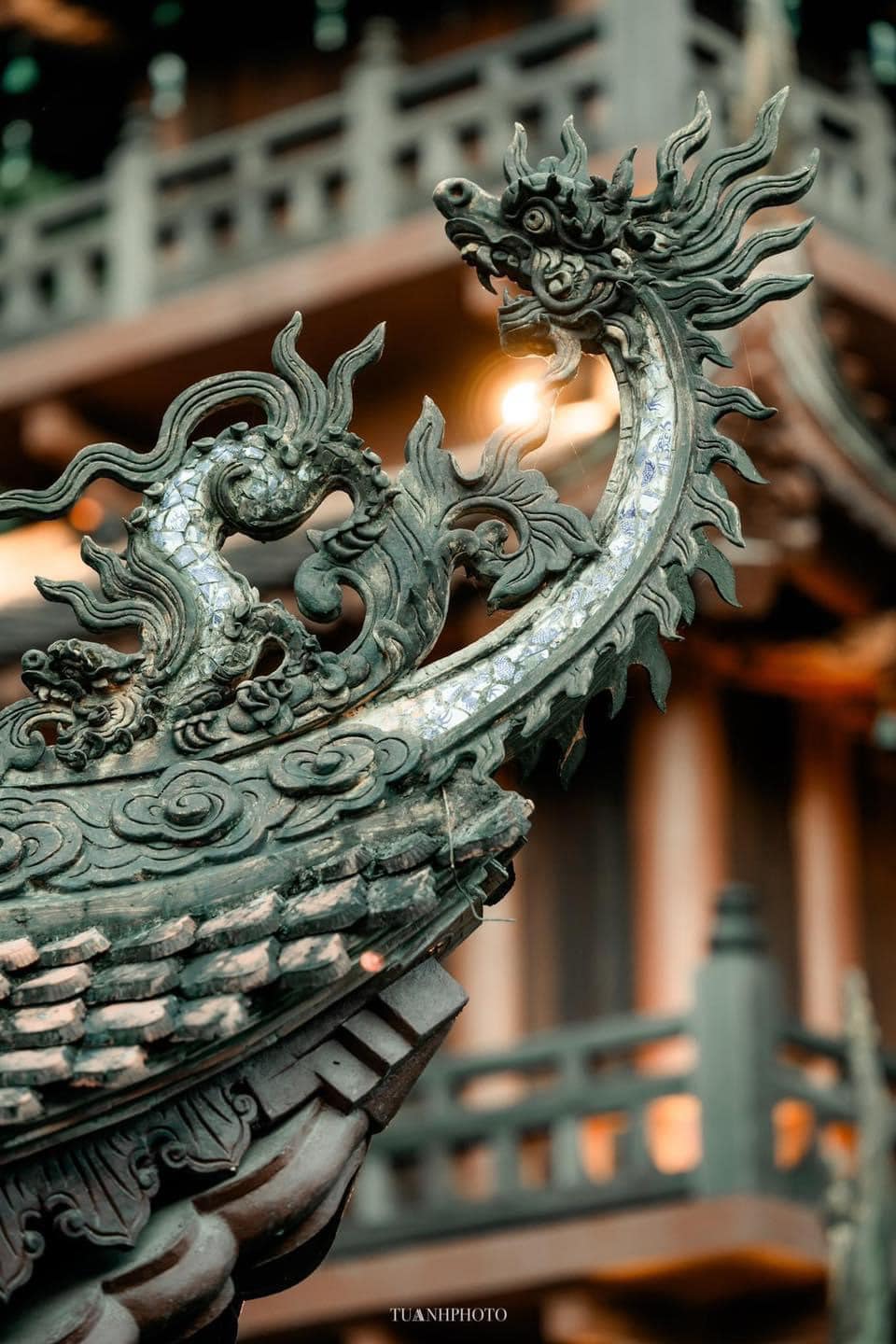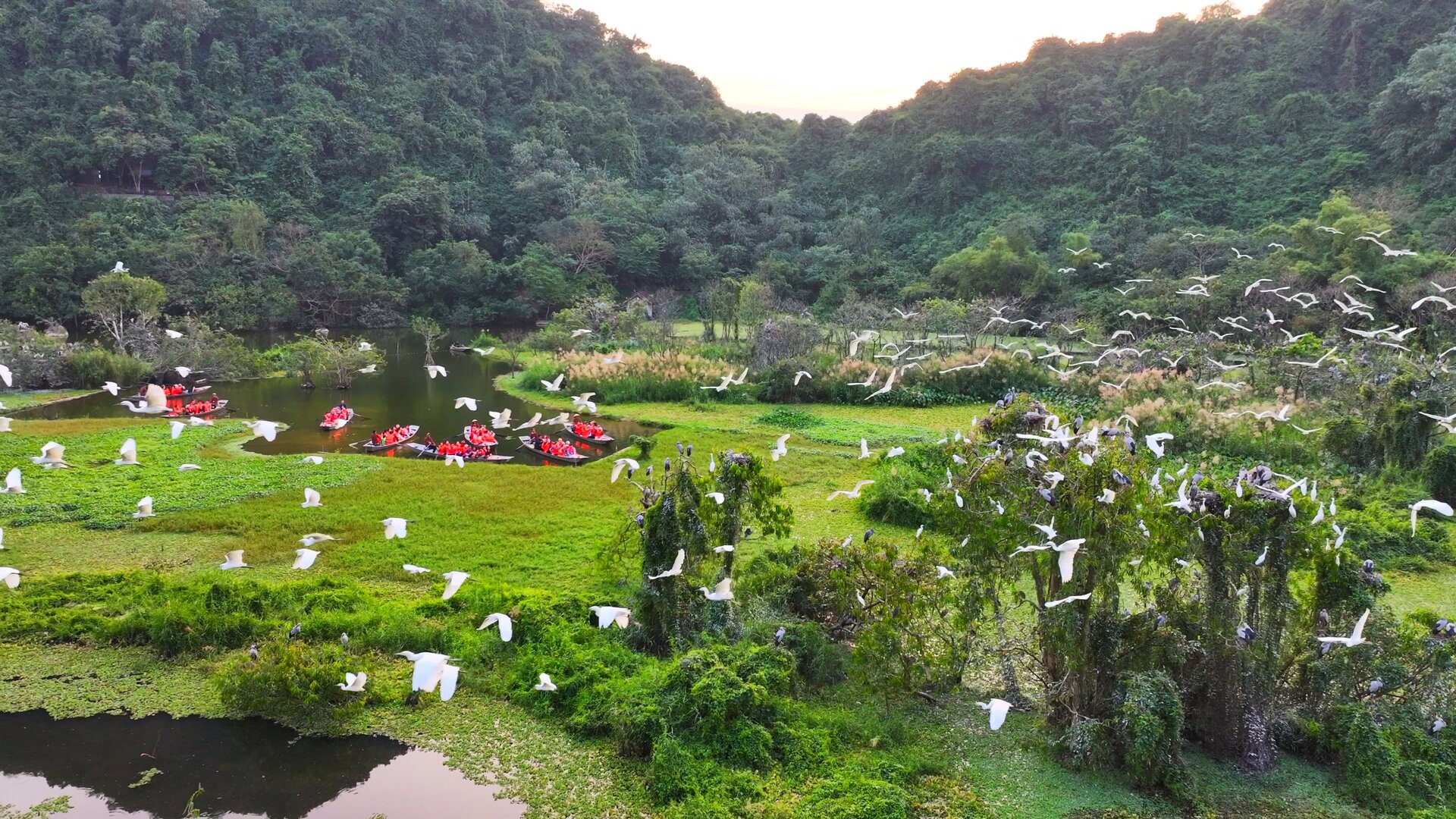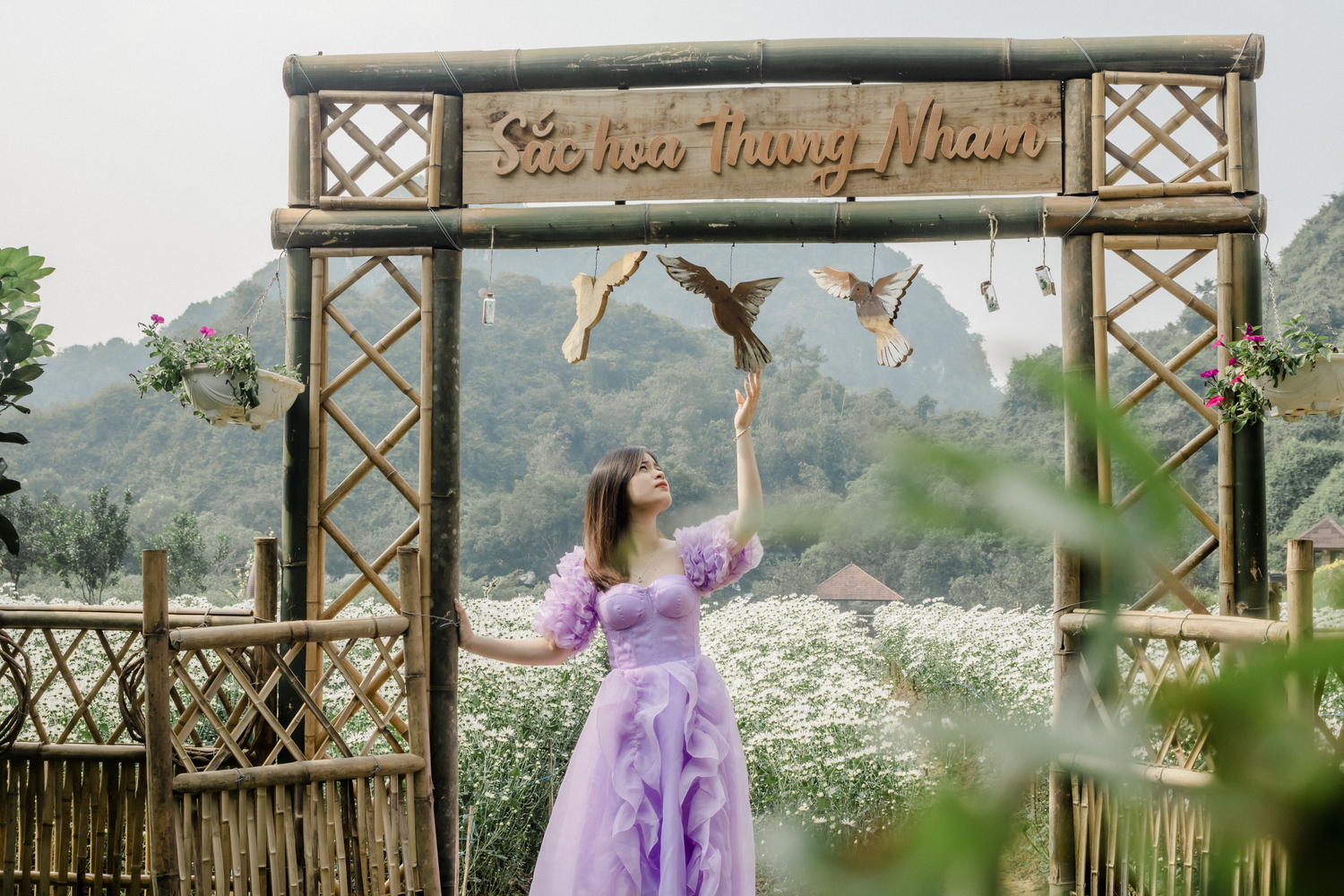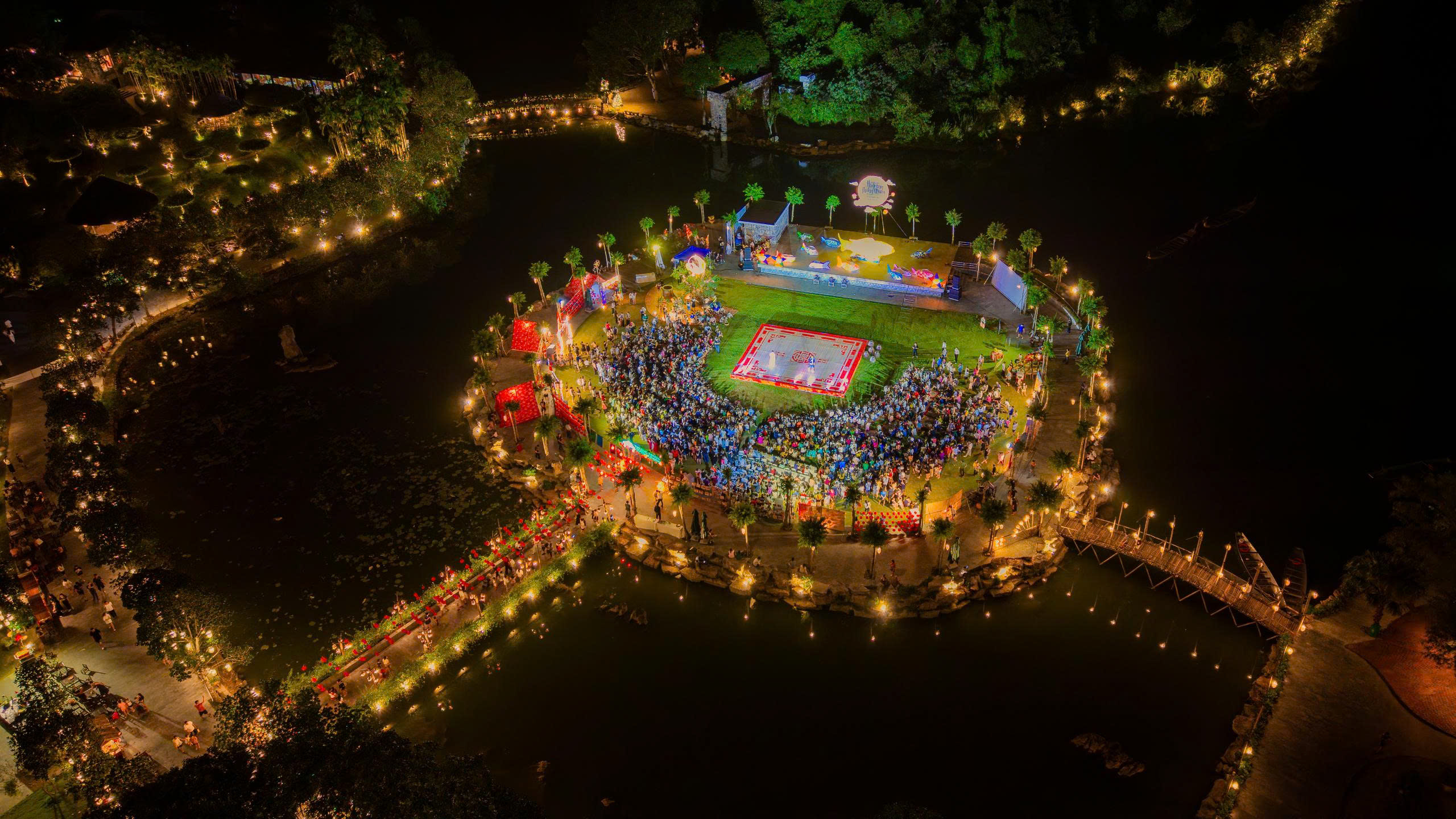Tucked away amid verdant pine forests, Dia Tang Phi Lai Pagoda is one of the most distinctive spiritual destinations to visit in Ninh Binh, captivating visitors not only with its ancient charm but also with its tranquil atmosphereãcompletely detached from the bustle of everyday life.
DIA TANG PHI LAI PAGODA ã A Sanctuary of Peace in the Heart of Ninh Binh
The Revival of an Ancient Heritage ã The Rebirth of a Sacred Pagoda
According to ancient records, this site was once home to a grand pagoda dating back to the Ly and Tran dynasties, known as Chua Dung. Over the centuries, it was devastated by the turbulence of history and gradually fell into oblivion.
In 2015, Venerable Thich Minh Quang, abbot of Bai Dinh Pagoda, initiated its restoration and bestowed upon it a new name ã Dia Tang Phi Lai Pagoda ã with the aspiration to revive the spiritual and cultural essence of the old sanctuary while creating a haven of peace for the people of Ha Nam ã Ninh Binh.
The name ãDia Tang Phi Laiã carries profound meaning: ãDia Tangã refers to the Bodhisattva symbolizing compassion and salvation, while ãPhi Laiã means ãto fly and arrive,ã signifying that anyone with faith and spiritual connection, no matter how far away, will eventually find their way to this serene refuge.
The Revival of an Ancient Legacy ã The Journey of a Sacred Pagoda
According to ancient records, this site was once home to a grand pagoda from the LyãTran dynasties, known as Chua Dung. Over the centuries, it was ravaged by historical upheavals and eventually faded into oblivion for hundreds of years.
It was not until 2015 that Venerable Thich Minh Quang, the abbot of Bai Dinh Pagoda, initiated the restoration and renamed it Dia Tang Phi Lai Pagoda, with the aspiration to revive the spiritual and cultural heritage of the past while offering a place of peace and faith for the people of Ha Nam ã Ninh Binh.
The name ãDia Tang Phi Laiã bears profound meaning: ãDia Tangã refers to the Bodhisattva symbolizing compassion and deliverance from suffering, while ãPhi Laiã means ãto fly and arrive,ã signifying that those who are destined, no matter how far away, will always find their way to this tranquil sanctuary.
ô
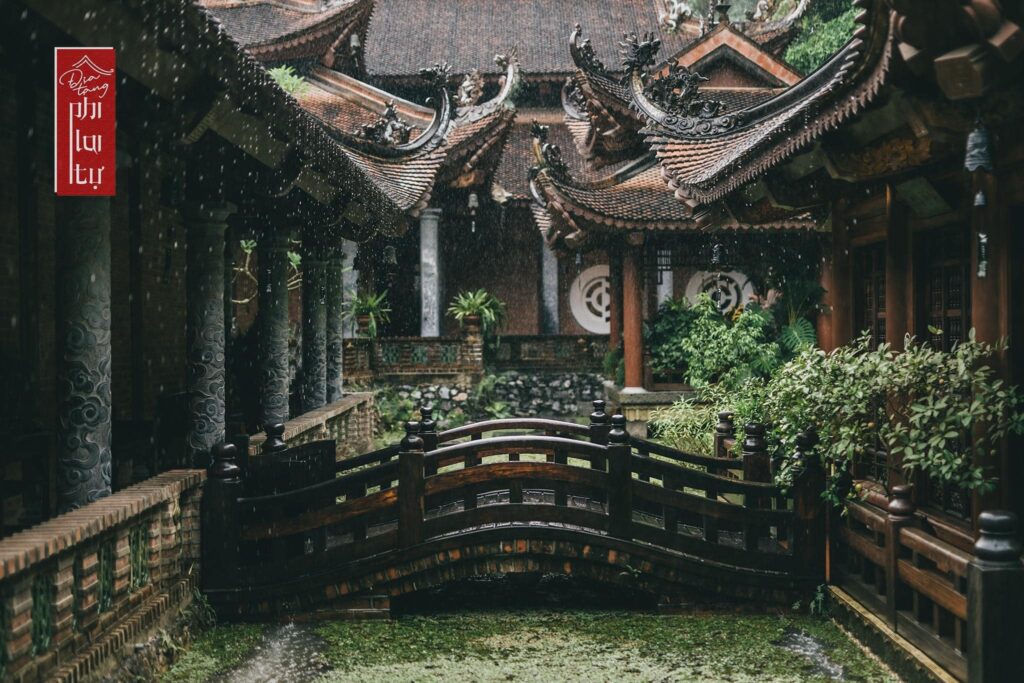
äÂnh: Internet
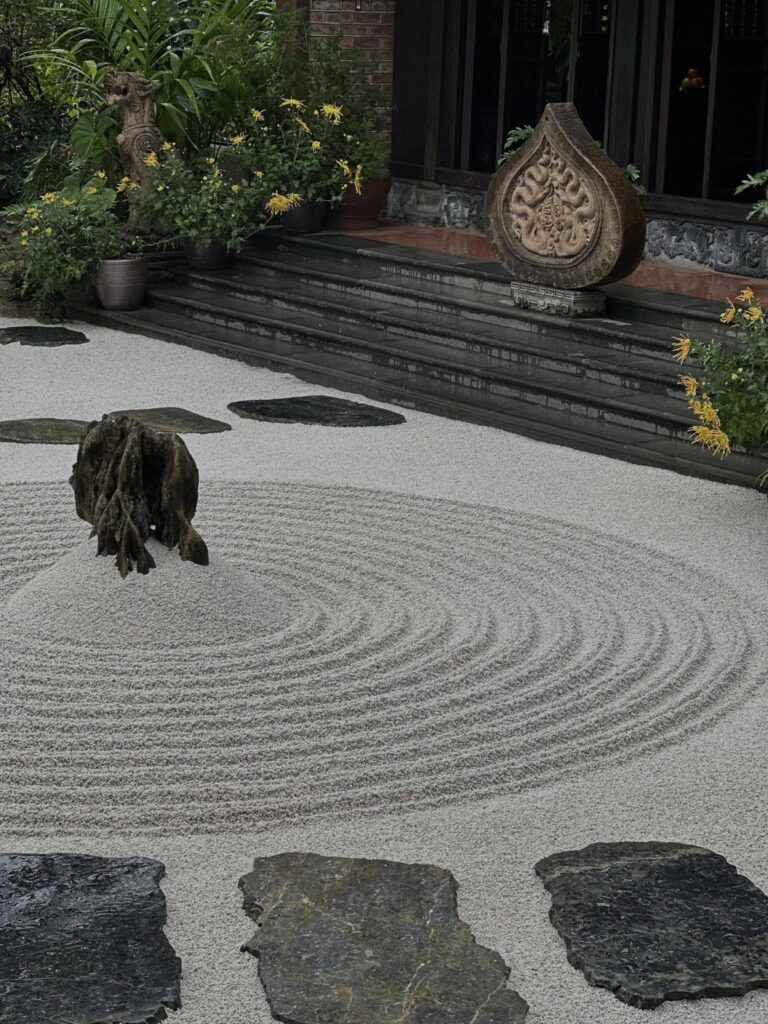
Photo: Internet
A Gentle Yet Profound Experience
A visit to Dia Tang Phi Lai Pagoda is not merely a sightseeing stopãit is a quiet journey of healing.
In the early morning, sunlight filters through the pine canopy, illuminating the white gravel courtyard in a misty glow. The soft chime of the temple bell, the gentle rustle of falling leavesãevery sound moves at a slower rhythm, allowing oneãs heart to find stillness.
You may:
- Offer incense and prayers for peace and blessings for yourself and your loved ones.
- Practice walking meditation around the gravel courtyard, breathing deeply to take in the subtle scent of pine resin mingled with agarwood.
- Sit quietly beside the small pond, watching the reflection of the mountains ripple across the mirror-like surfaceãfeeling your worries gradually dissolve.
- Or simply capture a few photos amid this serene setting: ancient tiled roofs, moss-covered stone steps, and saffron robes glimmering softly between the pine trees.
Spiritual Significance and Healing Energy
Locals believe that Dia Tang Phi Lai Pagoda rests upon a sacred land blessed with the harmony of heaven and earth.
Bodhisattva Ksitigarbha (Dia Tang) is revered as the guardian of the underworld and the savior of suffering souls. Many visitors come here to pray for the departed or to seek inner peace after lifeãs trials.
One of the pagodaãs most admirable aspects is its simplicityãit has no donation boxes scattered about, no noisy vendors, no commercial bustle. Everything remains modest and sincere, preserving the true essence of a place of practiceãsomething increasingly rare among spiritual tourist sites today.
Visitor Information
- Address: Ninh Trung Hamlet, Thanh Binh Commune, Ninh Binh Province.
- Opening Hours: 6:30 AM ã 6:30 PM daily.
- Entrance Fee: Free of charge.
- Dress Code: Respectful and modest attire; keep noise to a minimum to preserve the sacred atmosphere.
- Best Time to Visit: Autumn and early spring ã when the air is crisp, the light is gentle, the pines are lush green, and the weather feels refreshingly cool.
Photo: Internet
Suggested Itinerary near Thung Nham ã Extending Your Journey of Serenity
After visiting Dia Tang Phi Lai Pagoda, you can continue your journey about 40 kilometers south to Nam Hoa Lu Ward and explore the Thung Nham Ecotourism Zone.
If Dia Tang Phi Lai Pagoda offers inner peace and reflection, Thung Nham unfolds a vibrant natural worldãhome to the largest natural bird garden in Northern Vietnam, fascinating caves, blooming flower gardens, and lush fruit orchards. Here, visitors can also indulge in rustic local cuisine and enjoy a tranquil resort experience amidst pristine mountains and forests.
Try combining your day as follows: a morning of temple serenity followed by an afternoon immersed in Thung Nhamãs natureãa one-day journey that harmonizes spirituality and the natural world. Youãll realize that peace isnãt found far away; it begins the moment you choose the right place to pause.
Other nearby attractions in Ninh Binh you can combine with a visit to Dia Tang Phi Lai Pagoda:
- Hoa Lu Ancient Capital (27 km)
- Bai Dinh Pagoda (34 km)
- Trang An Scenic Landscape Complex (27 km)
- Hang Mua (33 km)
- Hoa Lu Old Quarter (28 km)
- Tam Coc ã Bich Dong (38 km)
- Van Long Wetland Nature Reserve

